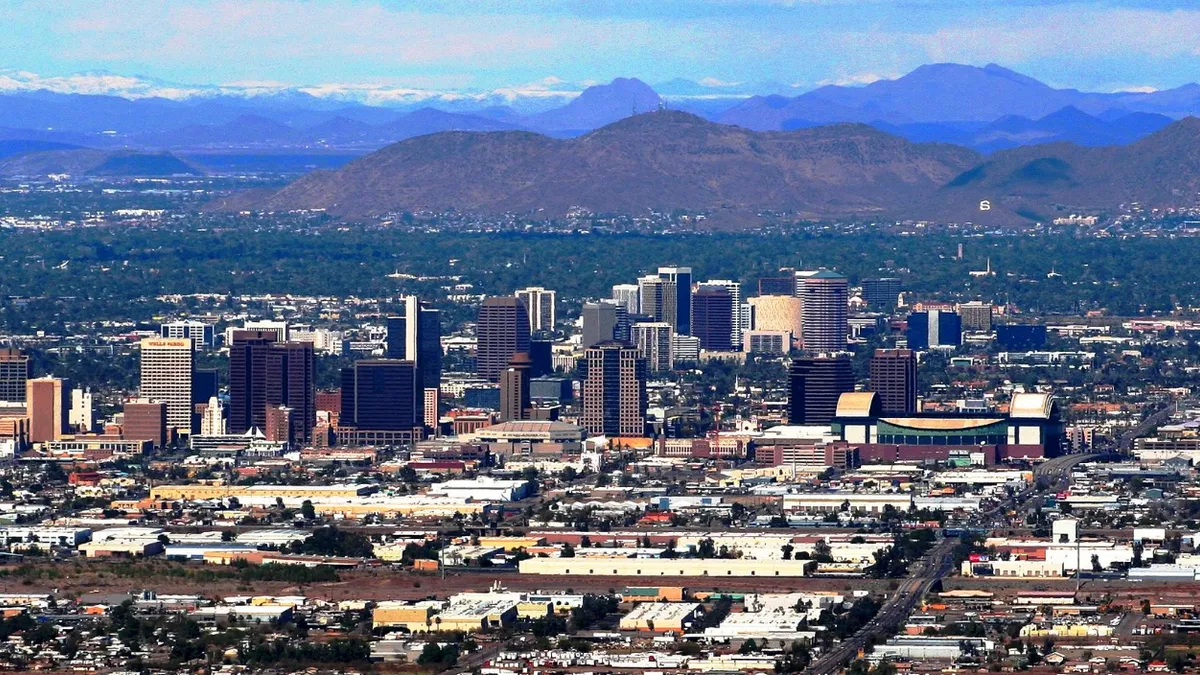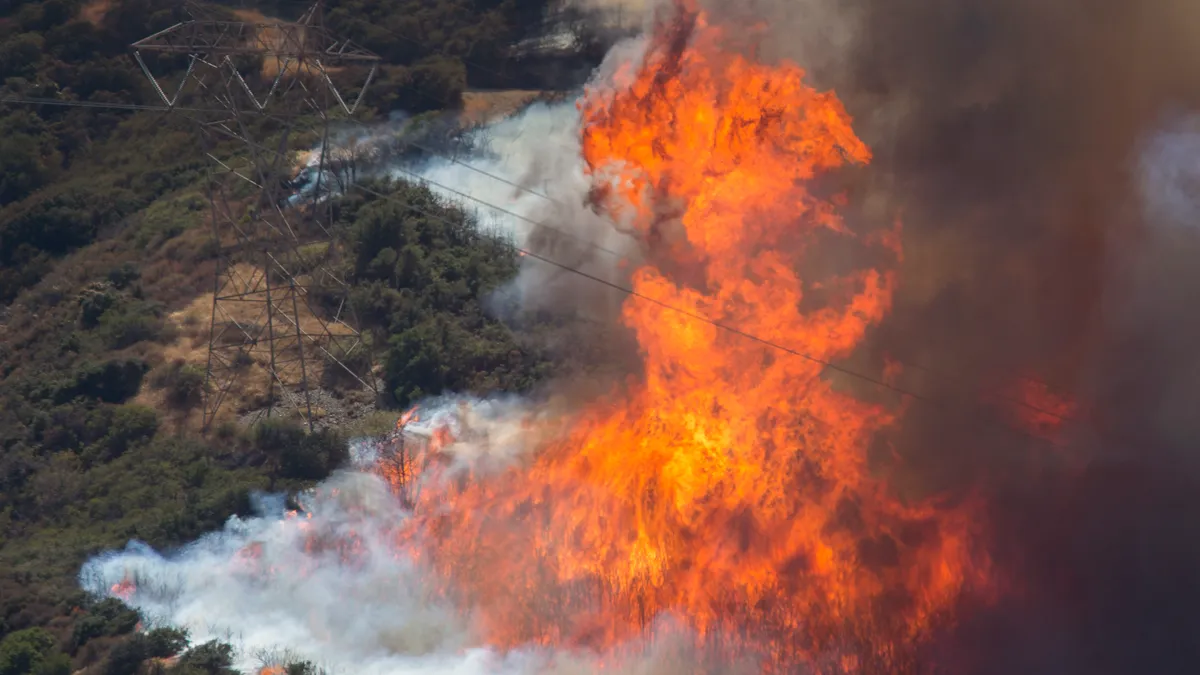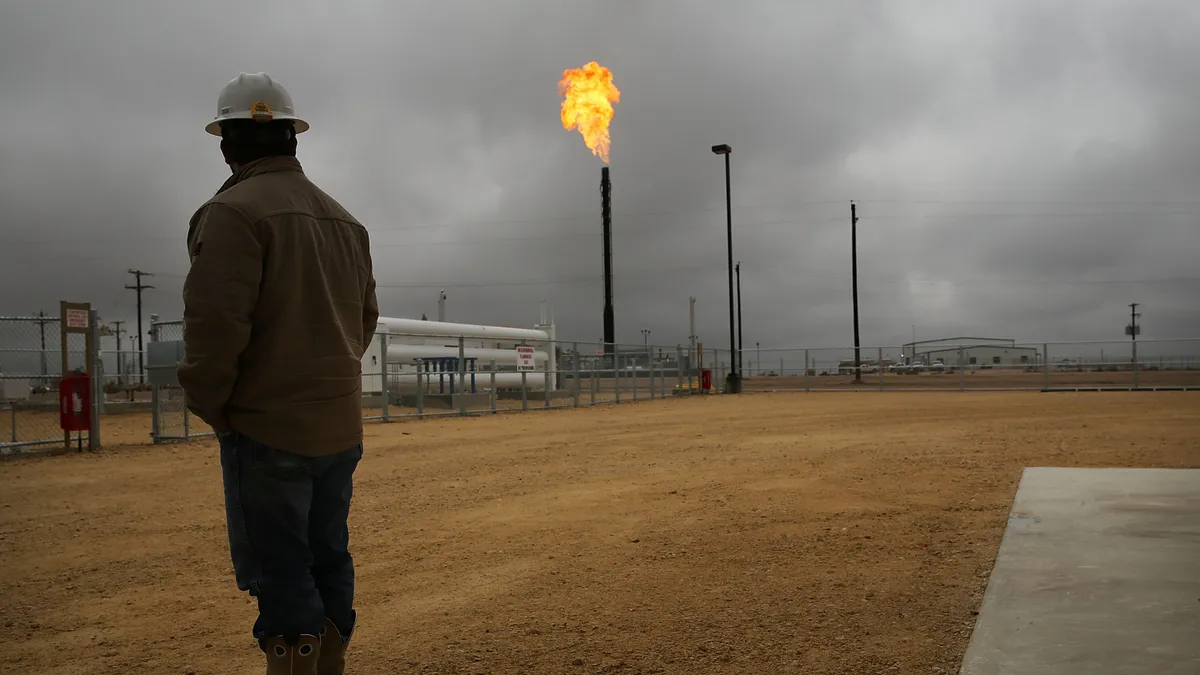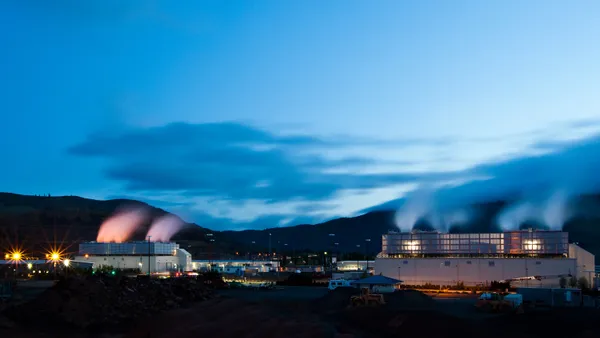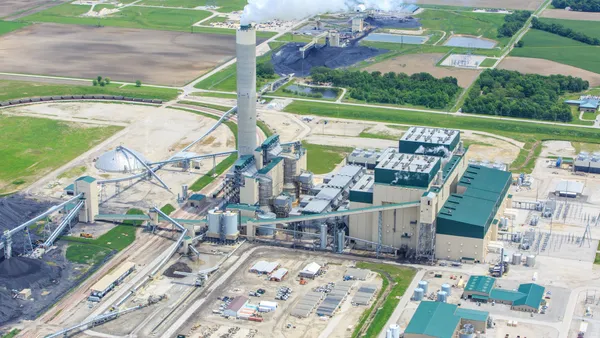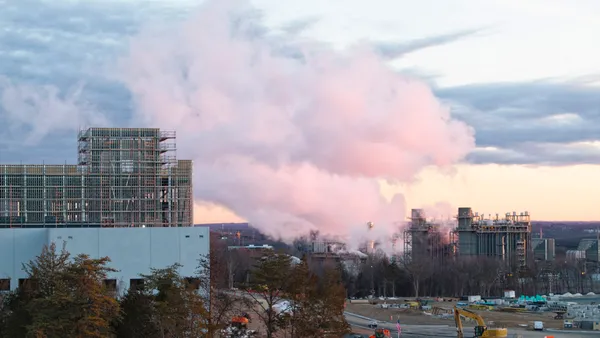Dive Brief:
- There is significant opposition to a rate increase proposed by Arizona Public Service, with both staff of the regulatory commission and the Residential Utility Consumer Office arguing no increase is warranted, the Arizona Republic reports.
- APS last year proposed a $166 million revenue increase it said would help pay for significant grid upgrades, but the Arizona Corporation Commission staff says that figure should be $0.
- The rate case has sparked interest beyond the proposed increase. APS' proposal includes the first-ever mandatory demand charge for an investor-owned utility, opening a debate into varying structures and time-of-use rates.
Dive Insight:
The Arizona Republic reports staff of the commission has filed more than 650 pages of analysis on the proposed rate increase, turning up several projects where it appeared the utility was improperly asking customers to foot the bill.
Specifically, staff said microgrid projects involving the military and Aligned Energy would not benefit the broader customer base, and the parties involved should be picking up the costs. Staff also criticized using customer revenues to pay for a $90 million solar project the utility developed with PayPal and Arizona State University. APS cut the ribbon on that project earlier this month; APS and PayPal will buy the output of the 40 MW solar farm.
The Residential Utility Consumer Office is also arguing for a revenue decrease of almost $25 million.
APS has said it needs the additional revenue to help make $3.6 billion in upgrades and maintenance over the next three years. The utility wants to spend $500 million to modernize its Ocotillo Power Plant with more efficient generation, and $400 million to reduce emissions at the coal-fired Four Corners Power Plant.
Other expenses include continued development of battery storage and microgrid projects, and advanced solar research. APS also proposed a 35% increase for low-income financial assistance.
The utility's proposed demand charges have also drawn concern. APS says that if it can reduce demand during its peak times—between 3 p.m. to 8 p.m. on weekdays—it can spend less on infrastructure and fuel. But while the utility favors the demand charge because of increased certainty, customer advocates say time-of-use rates send a better signal and allow the consumer more control over their bill.
You can read more of Utility Dive's coverage of rate structure debate in Arizona here.



